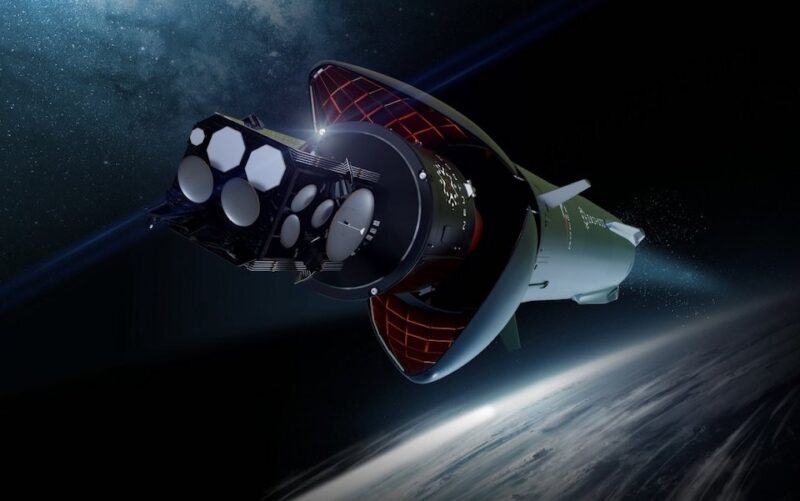Latest News

New imagery of Rocket Lab’s Hungry Hippo fairing deployment system on the Neutron rocket. Photo: Rocket Lab
Rocket Lab revenue was up 12% in the second quarter of 2023, above the midpoint of the launcher’s prior guidance.
Rocket Lab released its second quarter 2023 financial results on Tuesday, reporting $62 million in revenue. The results came out a day before Rocket Lab announced a new, five-launch contract with customer BlackSky.
During the second quarter, the Space Systems segment delivered a larger portion of revenue, reporting $39.6 million in the quarter. This was up 12% sequentially and near the high end of our prior guidance range of $37 million to $40 million.
Rocket Lab also increased the Space Systems backlog by $40 million during the quarter, driven by growth in its satellite, bus, solar and separation systems businesses. Space backlog was $534.3 million at the end of the second quarter.
Launch Services reported $22.5 million in the quarter from three launches, consistent with prior guidance of $23 million. CFO Adam Spice told investors that average revenue per launch increased up nearly $1 million to $7.5 million.
Net loss was $45.9 million, compared to $37.4 million in the same time last year. Increased expenses during the quarter included material purchases supporting Neutron and Space Systems developments and facilities, and expenses related to acquiring some of Virgin Orbit’s assets.
Non-GAAP gross margin was 31.8%, at the high end of prior guidance.
Rocket Lab shared guidance for the third quarter of 2023, expecting revenue to range between $73 million and $77 million, with $43 million to $47 million coming from Space Systems and $30 million from Launch Services, assuming four launches during the quarter. Rocket Lab continues to expect 15 launches in 2023.
Rocket Lab is also progressing toward a target of testing its medium-lift Neutron rocket in 2024, and CEO Peter Beck shared an update on Neutron’s development. Changes include adapting the landing legs for barge landings, which Beck said will increase launch availability, and adapting its “Hungry Hippo” fairing from four sections to two, allowing for a simpler mechanism.
“These design changes were actually made some months ago as part of our iterative testing analysis program and some direct customer feedback,” Beck said. “We’ve hit some significant milestones in Neutron production and testing in this quarter, including completion of the second stage qualification tank and test stand in preparation for the Cryogenic test campaign in the third quarter.”
Beck also called the Virgin Orbit factory acquisition a “scaling enabler,” that will help the company when it is ready to produce larger volumes of Neutron engines and composite components further along in the project.
“The beauty with the Virgin Orbit facility is that we walked in there and it’s just capitalized to the roof with equipment,” Beck said. “Where that really is going to help us, especially from an engine development perspective or engine production perspective, is that a lot of the long lead, really expensive capital equipment — very bespoke CNC machines and measuring systems —we just picked up for $16.1 million.”
Get the latest Via Satellite news!
Subscribe Now